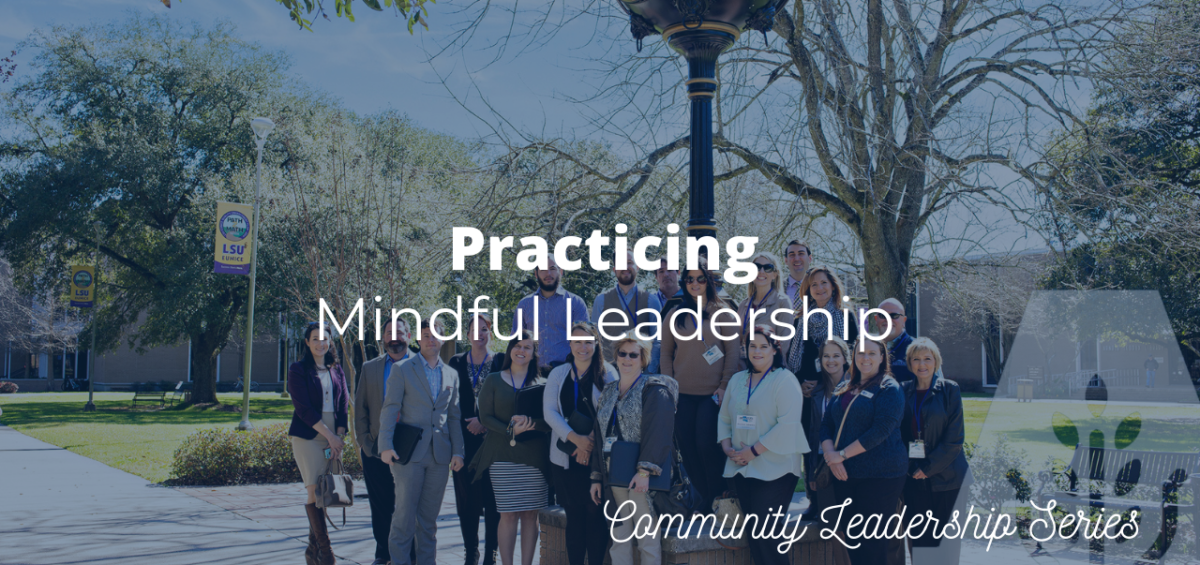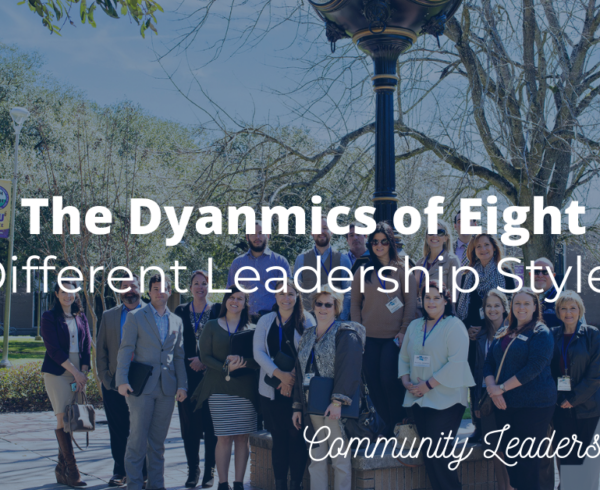During the past decade, the number of leaders indicating that job stress is a major stress in their lives has doubled. The U.S. Department of Health attributes 70 percent of work-related physical and mental complaints to stress. And health insurance claims related to stress are estimated to cost organizations more than $300 billion yearly. In today’s accelerating world, we live in an always-on, round-the-clock work atmosphere, are barraged with increasingly more information needing to assimilated, and are pressured to do more with less.
At the same time, or perhaps in response to this environment, strong leaders are striving to be high-producing (a given) and visionary, but also creative, innovative, authentic, and balanced. Leadership development programs and activities can help to develop many skills (for example, presentation skills, strategic thinking, problem solving, giving feedback, leading change, and building teams), but there are some qualities of terrific leaders that cannot be developed by merely learning about the nature, the value, or the right times to demonstrate them.
Some of these qualities can be referred to as “states of being.” Consider, for example, the states of being relaxed, alert, curious, close minded, open minded, negative, positive, or self-confident. These states of being are attained by having experiences and by discussing the experiences of others who have attained them.
One particular state of being that is increasingly seen in corporations and reputable executive education programs as a both necessary and distinguishing leadership attribute is mindfulness.
Defining mindfulness
Jon Kabat-Zinn, professor emeritus of medicine and founding director of the Stress Reduction Clinic, and the Center for Mindfulness in Medicine, Health Care, and Society at the University of Massachusetts Medical School, describes mindfulness as “paying attention in a particular way: on purpose, in the present moment and non-judgmentally.”
Mindfulness is achieved by regulating one’s attention-focusing attention on one’s thoughts and emotions. Dan Siegel is a clinical professor of psychiatry at the UCLA School of Medicine; faculty member of the Center for Culture, Brain, and Development; and co-director of the Mindful Awareness Research Center. He refers to mindfulness practice as “good brain hygiene” that is as important to our health as brushing our teeth.
What exactly are the benefits of practicing mindfulness? Greater frequency of practice may yield greater benefits, but in even a handful of minutes of practice each day, we can:
- improve mental focus and reduce mind wandering
- extend our attention span
- discourage black-and-white thinking
- assist in staying organized, managing time, and setting priorities
- lift us from a constant, low level of panic and guilt
- lower wear and tear on our bodies
- toughen immunity
- improve mood and emotional stability
- build self-monitoring capacity
- offer neuroprotective effects and reduce cognitive decline associated with aging
Mindfulness is not a new idea. Forty years ago Kabat-Zinn founded the Mindfulness-Based Stress Reduction program at the University of Massachusetts to treat chronically ill patients. This sparked interest in the medical field, where mindfulness began to be sued and applied to both healthy and unhealthy people.
Use of the ideas and techniques continued to spread around the world, during which time two other advances were occurring: psychologists created techniques to offer their patients the benefits of mindfulness training, and an increasing number of scientific studies were conducted on the impacts of mindfulness practice.
In the workplace
Why is mindfulness gaining attention now? As our understanding of what it takes to be a good leader evolves, we are finding that effective leadership requires self-knowledge, self-awareness, and centeredness. Additionally, research reveals that the best leaders have some method to manage the constant onslaught of inputs and stimuli to maintain their presence of mind and good health.
How does this work? Neuroscientists have been able to show, through the use of magnetic resonance images (MRIs), that mindfulness is associated with changes in gray brain matter concentration in areas of the brain activated during learning and memory processes, emotional regulation, and perspective taking.
In Mastermind: How to Think Like Sherlock Holmes, Maria Konnikova explains how neurologist Marcus Raichle learned, after decades of examining the brain, that our minds are wired to wander.
“Whenever our thoughts are suspended between specific, discrete, goal-directed activities, the brain reverts to a so-called baseline, ‘resting’ state-but don’t let the word fool you, because the brain isn’t at rest at all,” Konnikova writes. “This baseline activation suggests that the brain is constantly gathering information from both the external world and our internal states, and what’s more, that it is monitoring that information for signs of something that is worth its attention…[O]ur minds are made to wander. That is their resting state. Anything more requires an act of conscious will.”
Because business leaders see the need to do more things faster, they need to learn how to prioritize their attention and do the most important things really well. Attention is a limited resource. Paying attention to one thing comes at the expense of another.
Individuals cannot give their attention to multiple things at once and hope that their brains will function at the same level as it would if focused on just one thing. Two tasks cannot receive equal attention at the same time. One will be the focus, and the other will exist as “noise” to be categorized and perhaps filtered out.
Giving attention to one thing at the expense of another leader to “attentional blindness,” which is just what it sounds like. Focusing on one thing squarely makes people essentially blind to other stimuli. Neuroscientists have concluded that multitasking is not possible. When a person thinks she is multitasking well, what she is likely doing is task-switching, which is taxing on the brain and can be interpreted as a negative stress.
Being mindful
With the environments we work in these days, what can individuals do to try to gain the experience of being mindful? Remember that the “end in mind” is a continuous state of mindfulness. To begin to achieve that end, though, one might try mindfulness training exercises to help develop awareness of one’s mental and emotional pulses.
There are several methods or practices that can lead a person to a mindful state. The practice of mindful leadership has four primary elements:
- mastery of attention
- clarity of intention
- optimization of attitude and emotional intelligence
- integration into every domain of daily life, work, and relationships
All of those elements can be strengthened by one primary method-meditation. Search online for meditation guides. For example, Mindful.org provides descriptions and illustrations of numerous guided mediations used to build mindfulness. The basics of sitting are explained, as are the fundamental method of breathing and the importance of posture.
You also can find specific meditations to be used for different purposes or in different scenarios. For example, if you’re working on changing habits, try the “habit releaser” meditation. “Body scan” is a wonderful and brief meditation that assists in identifying spots where you are holding on to tension or fear, and then relaxing those areas.
Mindfulness does not have to be practiced sitting still on a square cushion in a quiet room. The ultimate goal is to experience each day as mindfully as possible. The “mindful movement” meditation helps carry the sensations and benefits of mindfulness throughout each day, and all of its activities.
When trying to adopt mindfulness as a new habit, there are simple and clever ways to begin to make the practice routine. Some people associate walking through the transition between two rooms with mindfulness, and use this physical transition as a prompt to breathe, reflect on their thoughts, and return to the present.
Others have tried doing mini-mediations or quick body scans at red lights while driving. There are creative ways to build this practice into your life without the need to set aside time in a separate place, if that presents a challenge.
What follows are examples of mindful leadership at work, which were gathered from small consulting firms that teach mindfulness.
- A “mindfulness laboratory” was developed to teach software engineers and technology leaders skills to bring greater innovation, creativity, focus, change, resilience, personal sustainability, mindfulness, and wisdom to their work.
- Mindfulness became one of the guiding values for a division of a major global computer hardware manufacturer. The work eventually spread to many divisions and locations of the company worldwide.
- An initiative called “Attention Leadership” gave rise to wave of programs designed to help all leaders in the organization become more effective, innovative, and change resilient.
- At a health cooperative and a children’s medical center, training sessions were held for medical leaders that emphasized the practice of mindfulness for mastering stress, reducing pain, improving attention, developing clear presence, improving the quality of communications, increasing clarity and depth of thinking, and improving the quality of work. Mindfulness also is a core element of the training of medical students, physicians, nurses, and other healthcare professionals at the International Center of Mindfulness, Mediation, and MindBody Medicine.
The foundational ideas underlying mindfulness are time-tested and proved to have significant benefits. At minimum, we can begin to integrate mindfulness into our present lifestyles, especially since the integration can involve such small amounts of time and are “portable.” Being transparent and vocal about your practice can serve as powerful modeling for others. And if you work with individual leaders who encounter stress on the job (are there leaders that don’t?), you could be offering them physical, emotional, and mental relief and improved effectiveness by introducing them to this practice.
More broadly, we can share information and resources with training and development staff or otherwise support the integration of mindfulness content and practice into larger, more systemic leadership development programs.
Mindful leadership can alter the tone of the work environment in subtle and overt ways, making it a potential agent of positive change in organizations.
Resources
If you don’t have the time or energy to peruse the countless online information about mindfulness, begin with the following resources.
Websites
The Institute for Mindful Leadership
Books
Wherever You Go, There You Are by Jon Kabat-Zinn
Buddha’s Brain by Rick Hanson
Your Brain at Work by David Rock












